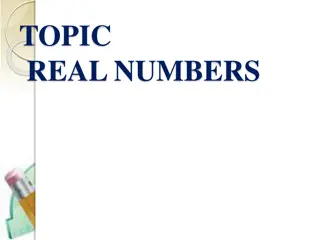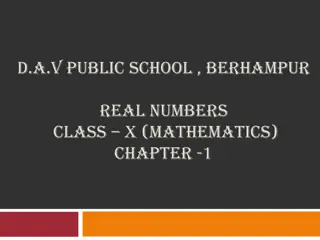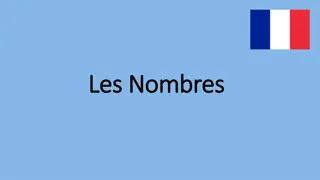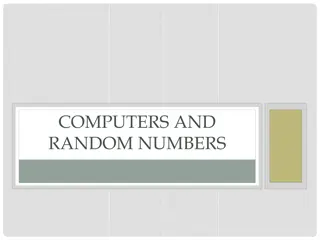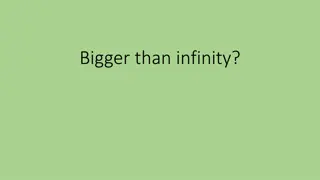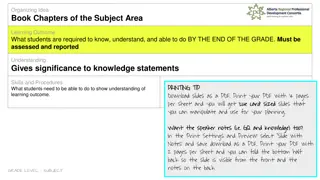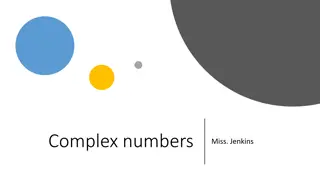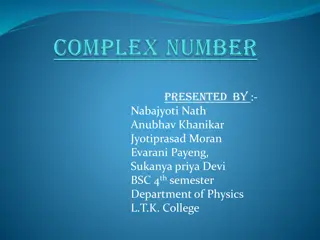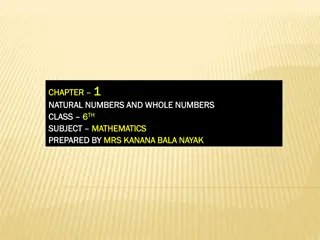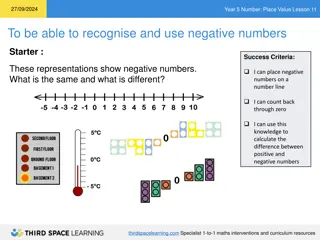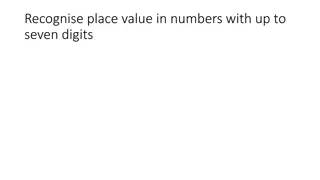Mastering Numbers in Writing: A Comprehensive Guide
Learn how to effectively use numbers in writing, including when to spell them out and when to use numerals. Discover general rules for formatting numbers in MLA and APA style, as well as guidelines for commas in numbers and dates. With practical examples and clear explanations, this guide will help you write numbers correctly in various contexts.
Download Presentation

Please find below an Image/Link to download the presentation.
The content on the website is provided AS IS for your information and personal use only. It may not be sold, licensed, or shared on other websites without obtaining consent from the author. Download presentation by click this link. If you encounter any issues during the download, it is possible that the publisher has removed the file from their server.
E N D
Presentation Transcript
Writing Lab How to Use Numbers in Writing
What is a Number? A number is a mathematical idea used to count, label, and measure. Numbers can be represented by numerals or words. Numerals or figures 1/2 5 3 25 XLI 101 1,492 MCM 500,000
What is a Number? Cont. Words One third Five Thirteen Forty-six Ninety-nine One hundred Twelve hundred Eight thousand Twenty thousand Three million
General Rules In ordinary writing and MLA format Spell out numbers which can be expressed as one or two words (one, thirty-six, ninety-nine, one hundred, fifteen hundred, two thousand, three million). Use numerals for numbers with more than two words (2 , 101, 137, 1,275). In technical writing and APA format Spell out numbers from one to nine (one, two, three, etc.). Use numerals for 10 and above (10, 11, 12, etc.). In all contexts and formats If you must begin a sentence with a number, spell the number out. NOT: 1994 was my birth year. BUT: Nineteen ninety-four was my birth year. OR: My birth year was 1994 (preferred). There is often more than one acceptable way to write a number; once you choose a usage, stay consistent.
Commas in Numbers Use commas between groups of three digits in most figures of 1,000 or more. 1,000 20,000 7,654,321 Following are some exceptions: Page and lines numbers (page 1014) Addresses (4132 Broadway) Four-digit year numbers (1999) Degrees of temperature (3071 F)
Dates For dates, use cardinal numbers (1, 2, 3), not ordinal numbers (1st, 2nd, 3rd). NOT: My birthday is March 24th. BUT: My birthday is March 24. For three-part dates, you can use either of the forms below: March 3, 1847 (month-day-year) 3 March 1847 (day-month-year) If you use the month-day-year format in the middle of a sentence, place a comma after the day and the year. If you use the day-month-year format, no commas are necessary. Alexander Graham Bell was born March 3, 1847, in Edinburgh, Scotland. Alexander Graham Bell was born 3 March 1847 in Edinburgh, Scotland.
Dates cont. Decades Decades are usually written out in lowercase letters (the twenties), unless they are part of special expressions (the Roaring Twenties). Decades can also be expressed in numerals (the 1920s, the 20s). Whichever form you use to express decades, be consistent.
Dates cont. 2 Centuries Spell out centuries in lowercase letters: the twentieth century the mid-nineteenth century Hyphenate centuries when they are used as adjectives before nouns: eighteenth-century thought first-century Christianity
Dates cont. 3 Year Designation The abbreviation BC follows the year, but AD precedes it. 19 BC AD 565 Some writers prefer to use BCE and CE, both of which follow the year.
Times When clock times precede a.m. or p.m., use numerals: NOT: ten-twenty a.m. BUT: 10:20 a.m. NOT: eight p.m. BUT: 8:00 p.m. Spell out hours expressed in quarter and half hours and hours followed by o clock: NOT: 6:00 o clock BUT: six o clock NOT: a quarter to 12 BUT: a quarter to twelve NOT: half-past 10 BUT: half-past ten
Decimals Use numerals for numbers containing decimals: 98.7 degrees 5.5 million 0.23 cm 99.99% $77.77 (Money amounts containing dollars and cents may be spelled out in rare situations, for example, in legal documents.)
Percentages Use numerals to express percentages (75%, 9 percent). Most style guides suggest that you use the percent symbol (100%) in technical or scientific writing; use the word percent (100 percent) in writing that requires numbers less frequently. Once you choose a usage, stay consistent.
Units of Measurement Use numerals with units of measurement expressed as abbreviations or symbols. 515 lbs 0.45 cm 20 Hz 6 2 212 F 70 mph 88,909 $500 If the context is not technical, if the number is not a decimal and is below 9 (for APA) or can be spelled in two words or fewer (for MLA), and if the unit of measurement is spelled out, you may express the number in words: The average U.S. resident eats almost four pounds of meat per day. My brother is six feet two inches tall. The temperature was a bone-numbing five degrees Fahrenheit. The freight train crept along at eight miles per hour. I bought this fine-looking truck for a mere five hundred dollars.
Roman Numerals Use Roman numerals to differentiate popes, kings, emperors, queens, etc. with the same name (Henry I, Pope Benedict XVI) to differentiate male members of the same family with identical names (Martin Luther King III) to number the major sections of an outline or the acts in a play (Act I, Scene III) to conform to an established terminology (Type II error) to cite pages of a book that are numbered with Roman numerals (xxv-xxvi)
Thats all, folks! This lesson is part of the UWF Writing Lab Grammar Mini-Lesson Series Lessons adapted from Real Good Grammar, Too by Mamie Webb Hixon To find out more, visit the Writing Lab s website where you can take a self-scoring quiz corresponding to this lesson


